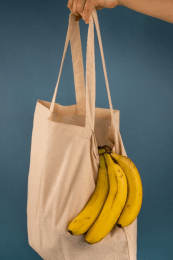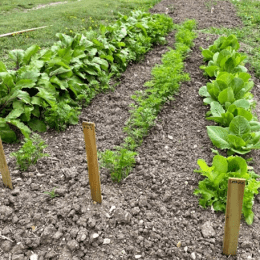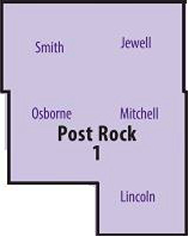Regular use of cloth bags is considered important to “save the environment,” but isn’t personal and family health just as important? The inside and outside of reusable grocery bags can be a breeding ground for dangerous foodborne bacteria which can pose a serious risk to our health.
Reusable bags if not properly washed between uses, create the potential for cross contamination of foods.
When transporting foods, keep food safety in mind. Juices from meats can leak from packaging and contaminate ready-to-eat foods like fruits and vegetables in the cloth bag. A good rule-of-thumb is to put raw meat in a separate plastic bag before packing in reusable bags, or use a separate cloth bag for meats.
Where do you place your reusable bags while putting groceries away? The outside of the bag may be contaminated from the grocery cart, the store counter, or from the floor of your vehicle. If you set bags on the counter when you get home, the germs on the outside of the bag are now on your countertops. Remember to wash and sanitize your countertops before preparing food.
When shopping for reusable cloth bags, look for ones that are washable and remember to launder bags often. Simply washing reusable cloth bags between uses in the washing machine, or by hand, with soap is effective at reducing bacteria by 99.9%.
By: Jamie Rathbun
 temperatures average 45F. These include:
temperatures average 45F. These include: Smoke Alarms – Smoke alarms should be in every bedroom and in the common areas on each floor of a home. Mount them at least 10 feet from the stove to reduce false alarms, less than 12 inches from the ceiling and away from windows, doors and ducts.
Smoke Alarms – Smoke alarms should be in every bedroom and in the common areas on each floor of a home. Mount them at least 10 feet from the stove to reduce false alarms, less than 12 inches from the ceiling and away from windows, doors and ducts.
 The Medicare Part D Low Income Subsidy, sometimes referred to as Extra Help, assists people with limited income and resources with paying for their prescriptions.
The Medicare Part D Low Income Subsidy, sometimes referred to as Extra Help, assists people with limited income and resources with paying for their prescriptions. Do you have small purple flowers popping up in your lawn? This is likely henbit, the broadleaf weed that actually germinates in fall and flowers in spring. Follow the link below to learn about the pros and cons of henbit:
Do you have small purple flowers popping up in your lawn? This is likely henbit, the broadleaf weed that actually germinates in fall and flowers in spring. Follow the link below to learn about the pros and cons of henbit: